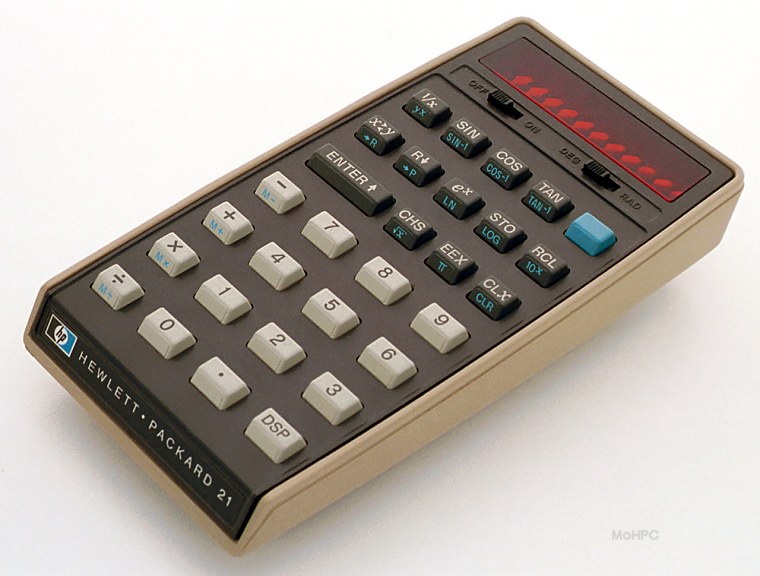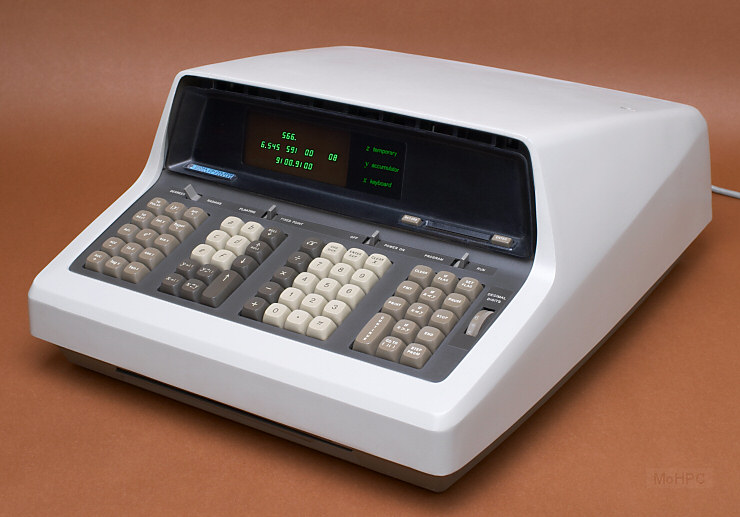Slide rules were fantastic devices to help with all sorts of math, science, and engineering computations. I was very intrigued by them, and learned to use them at a young age. My freshman year as an engineering student at BYU in 1970 we had to take a class in how to operate a slide rule, keeping track of the decimal point as we manipulated the logarithms of numbers.

I took a two year break from college for my mission and when I returned to my engineering studies in 1973 the world had turned upside down. Hewlett Packard had revolutionized the scientific calculator world with its HP-35 pocket calculator, which could do trig functions, roots, powers, and more. These were super expensive for poor college students at $300 or more. I bought the next generation model HP-21 in 1975 for the still dear price of $125. (I still have this calculator and it still works!)

I recall in my advanced math class in high school we were loaned a programmable desktop calculator, which I believe was the HP-9100. I was blown away by it, and was fascinated with programming it to solve the quadratic equation. I'm sure this early experience had an impact on my choice of college studies and career.

I have continued to use HP calculators throughout my career, and still have several vintage models, including my HP-21. They have become valuable collector's items. I was cleaning out my desk and decided to sell my HP-29C on ebay. Even though it no longer works, I still have the box, manual, and other items, and apparently these are valuable and rare because the high bid is over $70 already! Here is the item.
Operating these HP calculators is a joy, with their high quality construction, button feel, and RPN number entry. And playing with my old "toys" shoots me back in time to my college days and working for HP in Boise.
BYU tuition in 1973 was the same, or even less than, the cost of an HP calculator. I paid $300 tuition that fall.
ReplyDelete